In this post I'll give you a little peek into the time travelling that our NEO course has offered us. I won't go in any particular order. Let's start with the future.
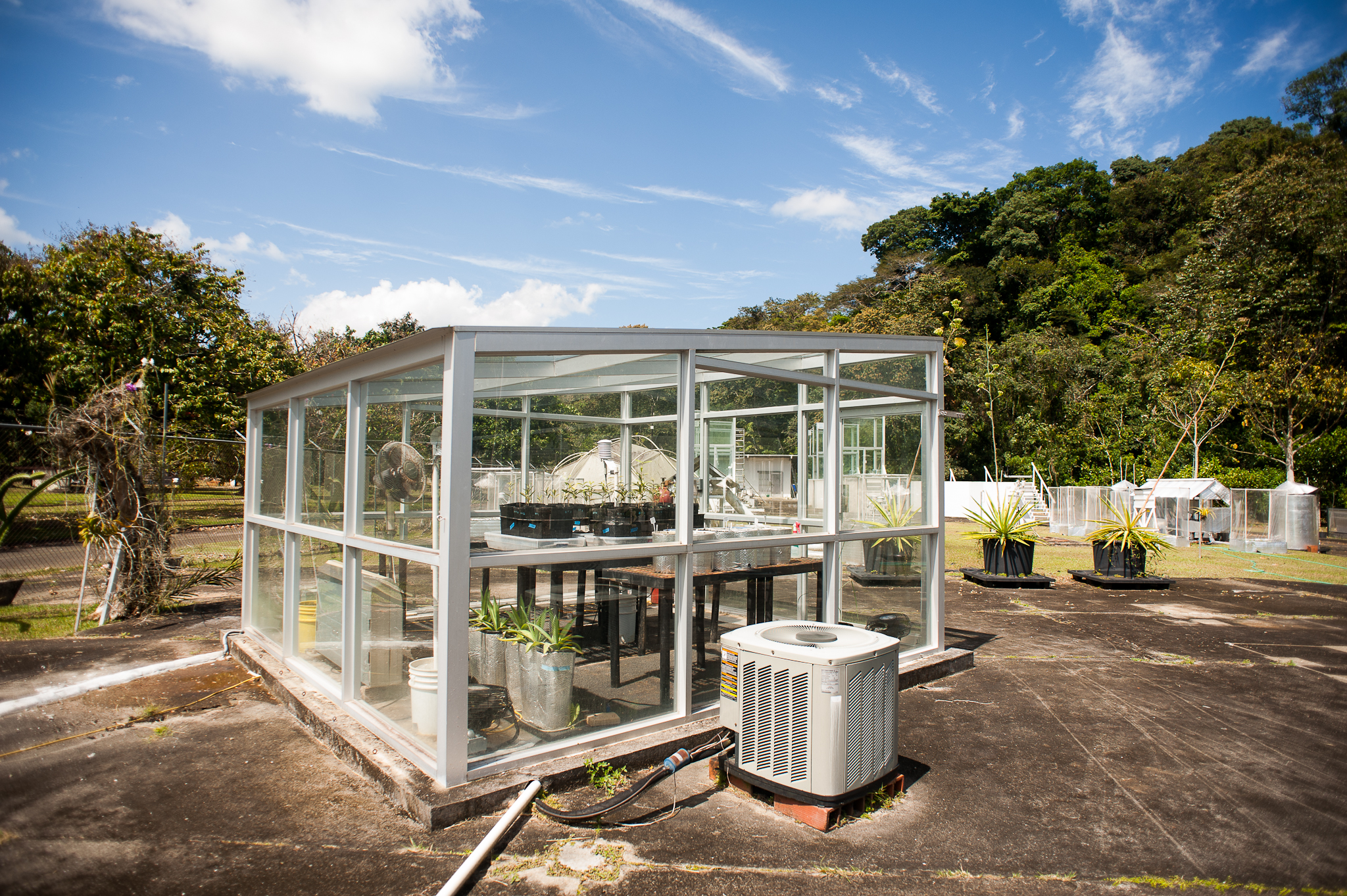
Welcome to Winterland. Nikon D700 + 20 mm f/2.8, 1/2000, f/4.5, ISO 200.
Every day, before our guest speakers start their lectures, the students all go through a round of introductions.
- "Hi I'm Alex from McGill, I'm interested in the evolution of signals in electric fish."
- "Hi I'm Kelsey from Illinois, I'm interested in using ancient dog DNA to study native american migration patterns."
- "Hi I'm Peter from Arizona State, I'm interested in ant behaviour, specifically in the Cecropia - Azteca Ant mutualism."
- "Hi I'm Larissa from Panama, I'm interested in insect vectors of diseases."
etc.
Then, came the turn of our speaker of the day: "Hi I'm Klaus, I'm a gardener."
Klaus Winter is a STRI scientist looking at the effects of climate change on plants. He effectively uses greenhouses as time machines, pumping in high CO2 levels that reflect the predicted levels of CO2 in the next decades. Together, these little greenhouses scattered across the STRI station form what is known as Winterland. In the long run, Klaus is hoping to increase the scale of his greenhouses and see how a diverse community of trees responds to the anticipated environmental conditions.
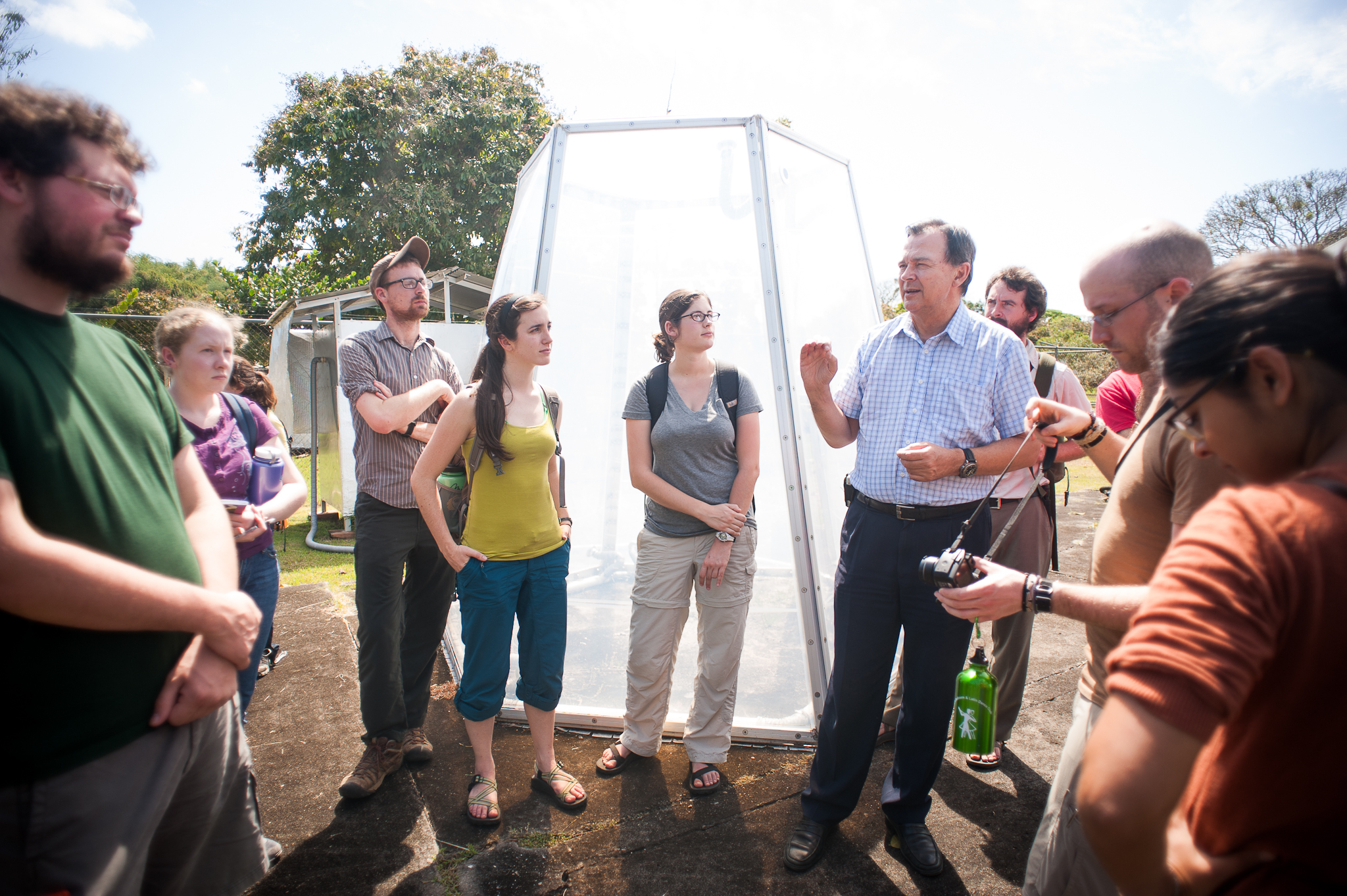
Klaus Winter and students. Nikon D700 + 20 mm f/2.8, 1/640, f/2.8, ISO 200.
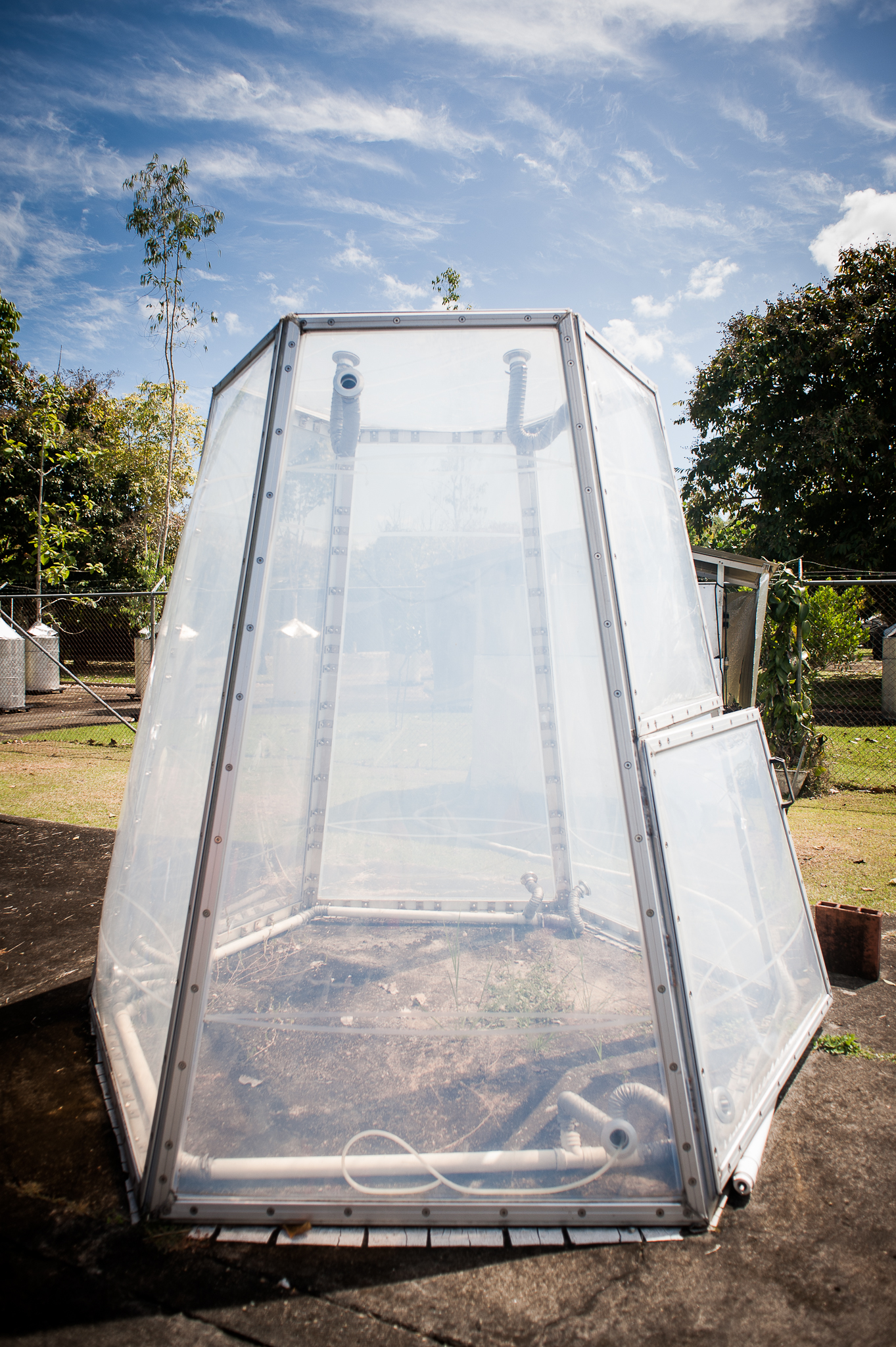
Klaus's inflatable pillow. Nikon D700 + 20 mm f/2.8, 1/1250, f/2.8, ISO 200.
Although this weird thing might look somewhat like a time machine, it's a small greenhouse made of ETFE (ethylene tetrafluoroethylene). According to Klaus, these "inflatable pillows" show promise as the building materials for the future larger greenhouses. Compared to glass, it is lighter, more flexible, more cost-efficient, and has better optical and thermal properties. It's also self-cleaning, a feature which every object on earth should have. With rapidly increasing amounts of CO2, forests as they are may change completely, affecting not only the trees themselves but all biodiversity that inhabits them. What Klaus does now allows us to peek into the future.
Now let's go to the past.
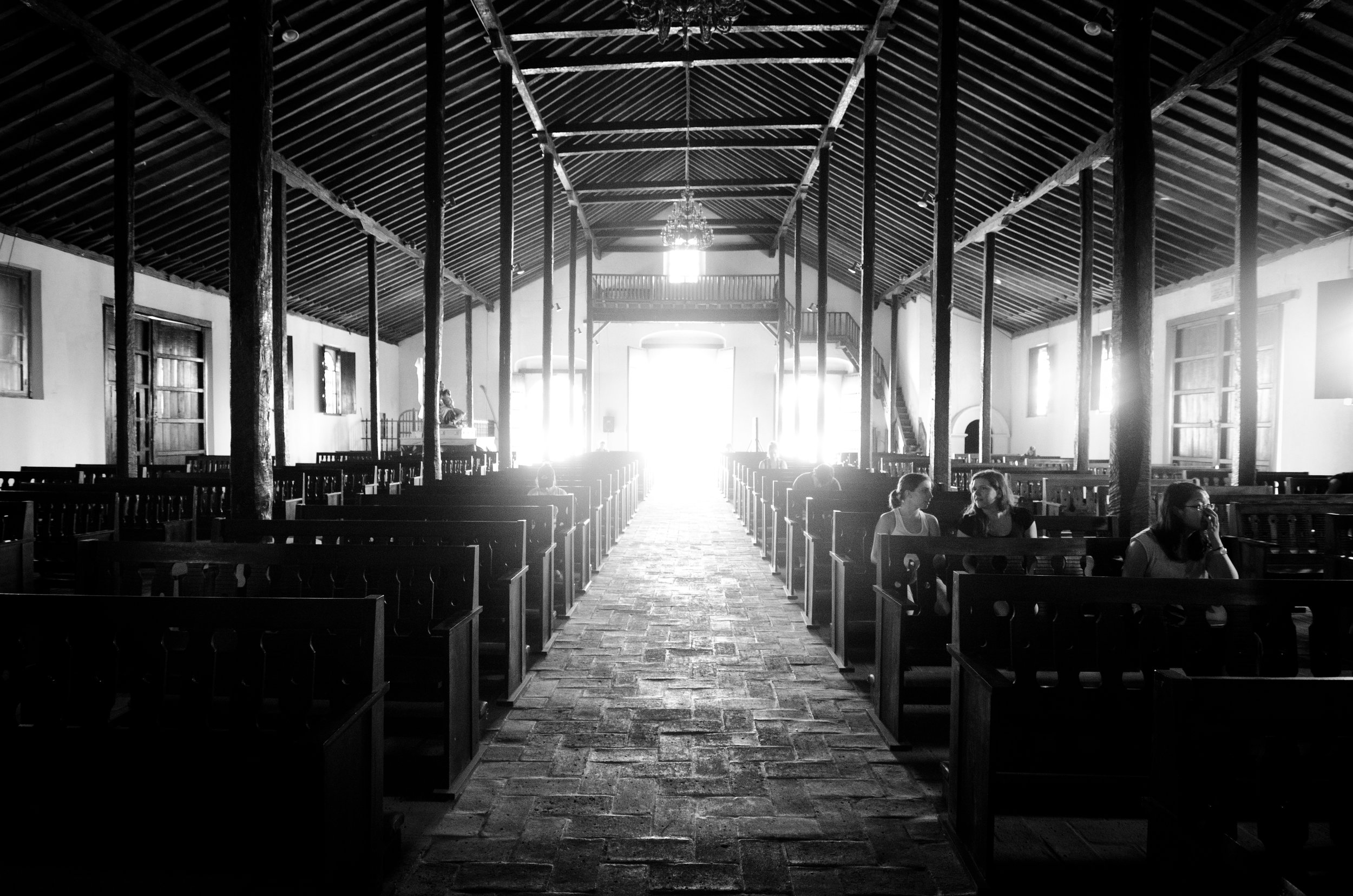
Church in Natá, the 2nd oldest city in Panamá. Nikon D7000 + Tokina 12-24 mm f/4.0 @ 12mm, 1/80, f/4.0, ISO 2500.
What better way is there to travel back in time than listening to a lecture by an archeologist? We had the pleasure of having Richard Cooke present to us a historical perspective of the isthmus, a first non-biology class. Just like detectives arriving on a crime scene, archeologists arrive in the present to look for hints of a story in the past. By looking at the soil chemistry, the types of deposit, the radioisotopes and the tools used on the rock, archeologists can reconstruct the past.
I also never realized how tiny pieces of information could provide so much insight. The discovery of similar mastodon tusk spears in different areas proposes a path used by ancient human civilizations. Manatee-tooth carvings found on the Pacific side of the isthmus suggest exchanges between the Atlantic and Pacific coasts since manatees were inexistent in the latter. Others pieces of the puzzle, however, are more difficult to interpret. Dr. Cooke explains that when it comes art, one may get hints of religious beliefs or social structure, but in the end it's often still just a guess. One enigmatic image recurring in pre-colombian art forms in the isthmus was this anthropomorphic crocodile feathered with stingray tails. Interestingly, it was not only found in artifacts associated with the rich, such as golden earrings, helmets and plates, but also in artifacts that the poorest treasured, in the form of iguana bone. Whether this represented an almighty clan, a symbol power, or a revered deity, we may never know.
And now, back to the present.
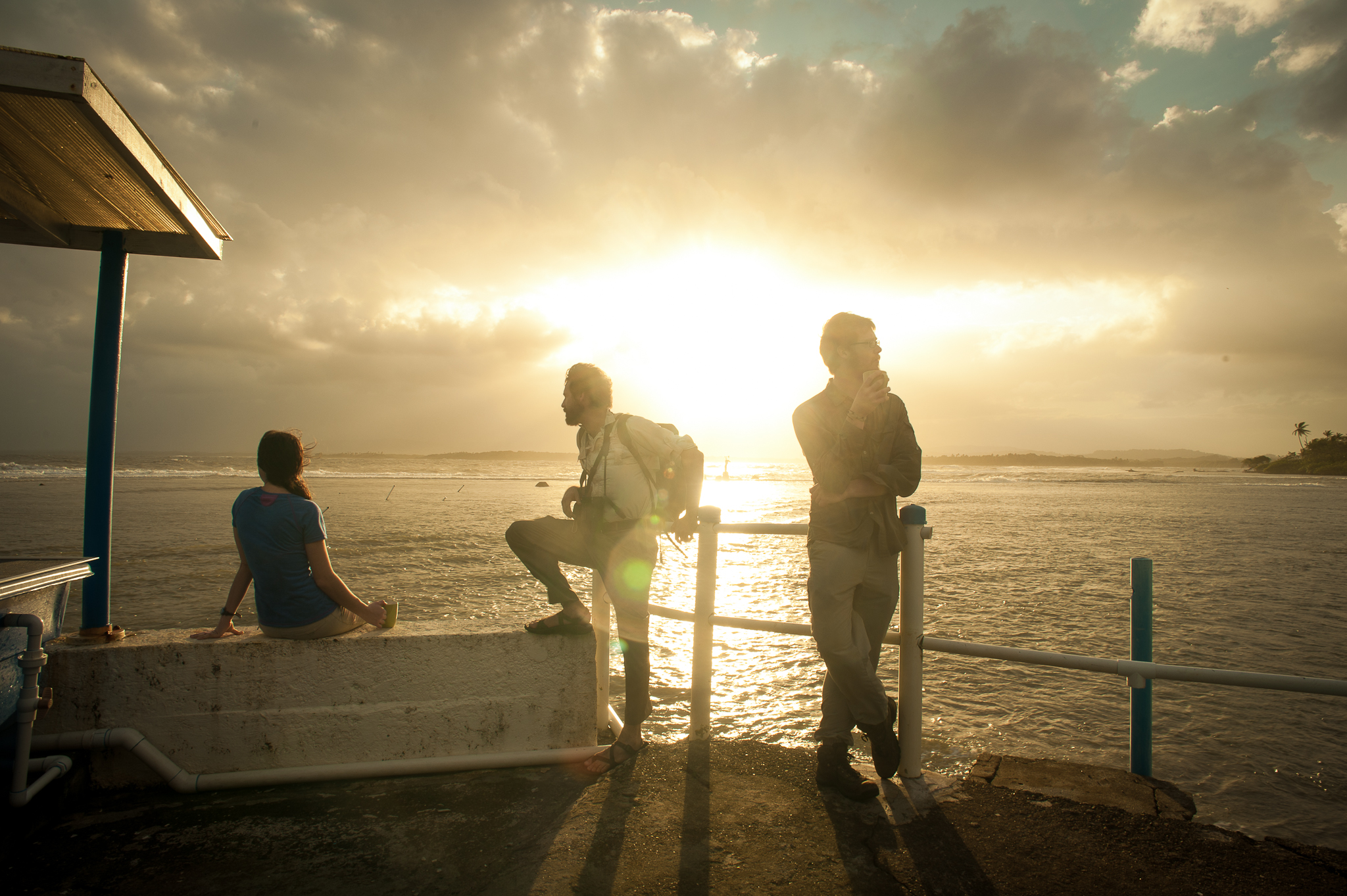
Erin, Peter and Buttons in Galeta. Nikon D700 + 20 mm f/2.8, 1/80, f/16, ISO 100.
These relics are small glimpses into the past, and many were forever lost after the arrival of the conquistadores which resulted in the wiping out entire civilizations in the 1500s. As Dr. Cooke noted, the current indigenous groups - the Ngöbe, the Kuna and the Emberá - are living relics representing a very long-lived lineage.
Unfortunately, still today, these indigenous groups must fight to defend their rights, land and culture. Canadian corporations are overseeing the development of destructive colossal mining projects in Ngobe territory. The ongoing losses of mangrove ecosystems are resulting in an increasing number of floods, threatening the homes of the Kuna. The neglect of the Darién province from the Panamanian government effectively causes poor health problems and low income opportunities to persist for the Emberá. Today, indigenous groups all over the world are links to the past, but they may not persist in the future unless a change of attitude comes along.
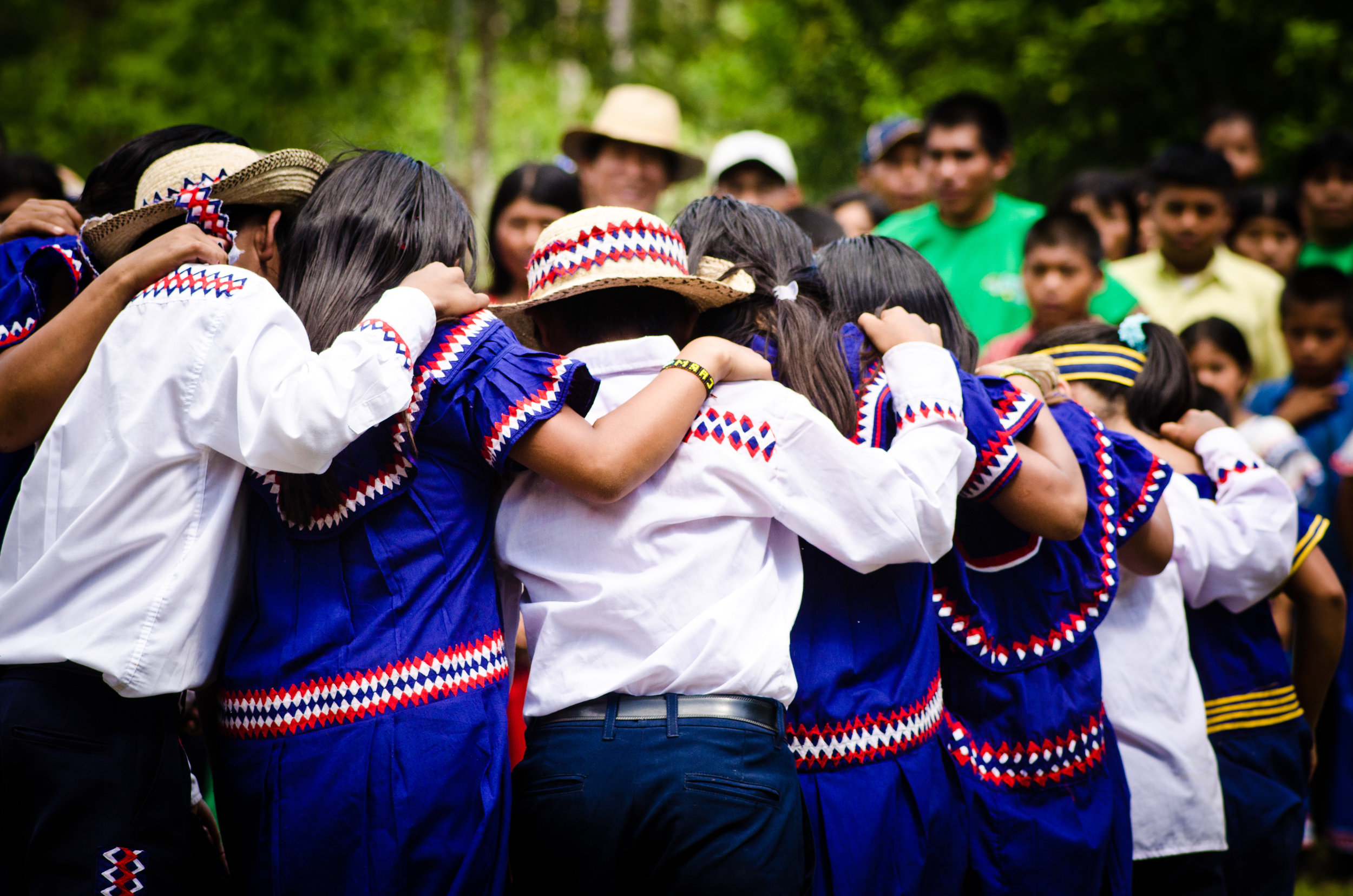
Ngöbe children performing the Jegi. Nikon D7000 + 105 mm f/2.8, 1/800, f/4.0, ISO 200.
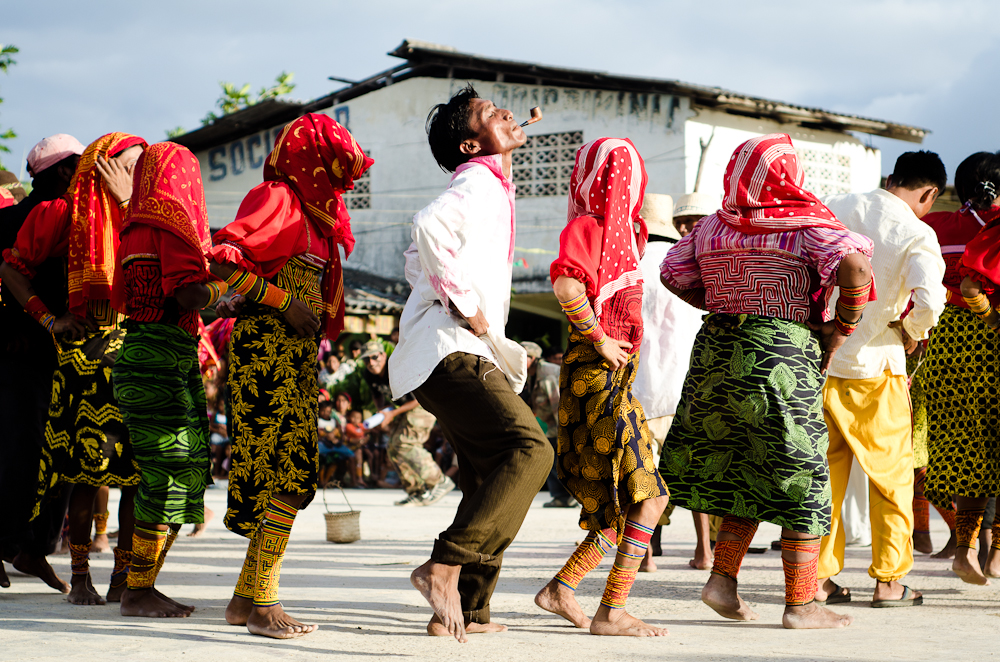
Performance during a historical reenactment of the Kuna revolution in Ukkupseni. Nikon D7000 + 50 mm f/1.4, 1/640, f/4.0, ISO 100.
In an ideal world I would have a picture of the Emberá right here, but I have yet to see them. Soon, though.
Thanks for reading!

